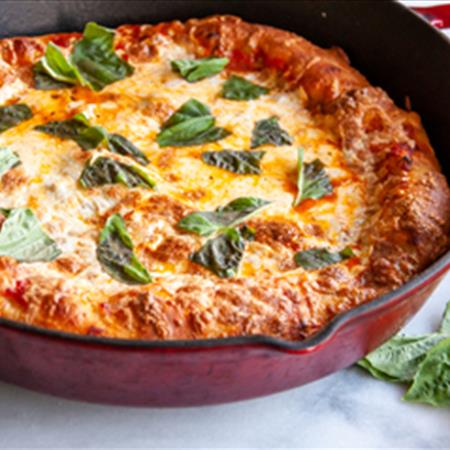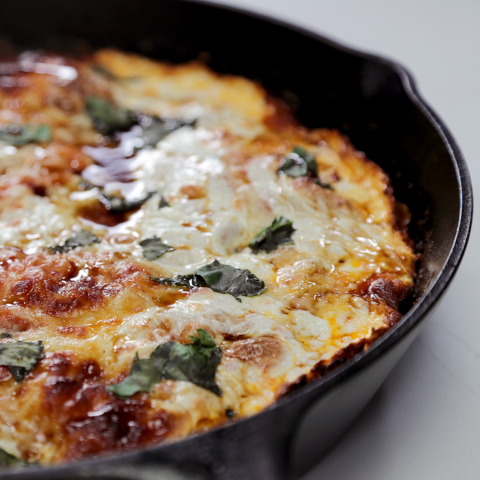Weeknight Skillet Pizza
All About Store-Bought Pizza Dough
Store-bought pizza dough can be a huge time saver and can produce a number of delicious meals quickly and easily. With this one versatile ready-to-use product, you can make weeknight skillet pizza, sheet pan pizza, calzones or Stromboli. So many possibilities!
No matter which recipe you choose to make, these storage, handling, and cooking tips will help make the most of your store-bought pizza dough.
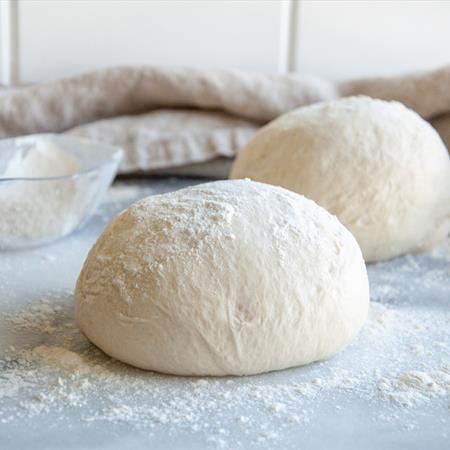
Use Dough at Room Temperature
When pizza dough is at room temperature, it’s much easier to stretch compared to cold dough straight from the fridge. This is because the gluten proteins that make pizza dough chewy and stretchy tighten up in colder climates and relax when they are at a higher room temperature. So, for a more cooperative dough, try letting it rest on the countertop for at least 30 minutes before stretching or shaping.

Cover to Prevent from Drying Out
Pizza dough dries out very quickly and will lose its stretchiness when the outside of the dough begins to dry out. You should always cover the dough with plastic wrap or a damp towel when letting it rest in between steps, including when you are letting it sit out at room temperature prior to stretching.
Even if it’s only for a couple of minutes, it’s important to at least loosely cover the dough with plastic wrap to maintain the desired stretchy texture of the dough.
Don’t Overwork it
When you make your own pizza dough from scratch, you first knead the dough to form gluten, which is necessarily to achieve the desired final chewy texture of the baked crust. If you try to roll out a homemade dough immediately after mixing it, it will instantly contract and be very hard to roll out because the gluten network is so strong. That’s why you need to let it rest after each step that you agitate the dough, such as mixing and portioning, before rolling it out.
When you are working with store-bought dough, the gluten has already been developed and relaxed so you should be ready to go. It is unnecessary to knead the dough again and in fact that will lead to the dough being difficult to stretch out and ultimately result in a dense final product due to overworking the dough.
There are different techniques to rolling out pizza dough, including stretching by hand or using a rolling pin. Both are perfectly fine options to achieve a flat round of dough. Whichever you choose, make sure to work the dough as little as possible in the process. If you find it difficult to roll out as thinly as you’d like, simply cover it with plastic wrap and let it rest for about 10 minutes before coming back to it. It should be easier to roll out after a quick rest.

Use Flour and/or Cornmeal to Prevent Sticking
When working with pizza dough, you’ll want to flour the countertop as well as any equipment including your hands and rolling pin to prevent sticking. The flour acts as a barrier so that the dough slides easily over your work surface and won’t stick to it.

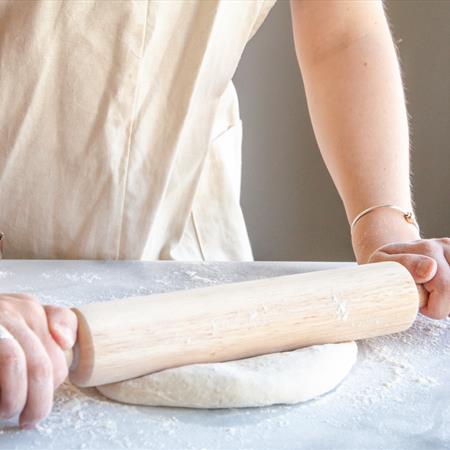
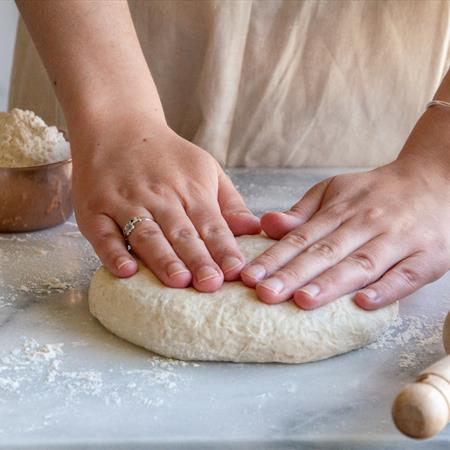
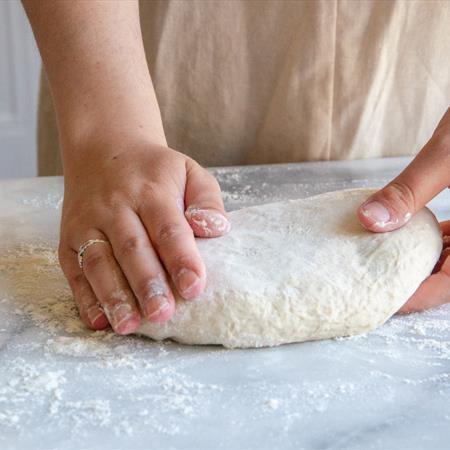
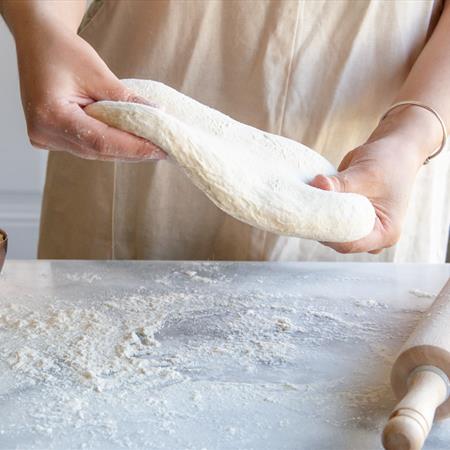

Likewise, cornmeal is often used to prevent pizza crusts from sticking to the pan when cooking. It acts in the same way but since cornmeal is a little coarser than flour, it further prevents sticking and adds a little crunch and flavor to the bottom of your pizza crust.
Add Extra Flavor
Speaking of adding flavor to pizza dough, there are a number of ways we like to enhance pizza crust with additional flavoring agents. For example, our weeknight skillet pizza recipe recommends brushing the rolled-out pizza dough with some olive oil, seasoning with salt and pepper, and rubbing with a clove of garlic before adding the sauce and other pizza toppings.
You can be creative with whatever spices you’d like—dried oregano is another great option for enhancing flavor on pizzas. Brushing the crust with olive oil is a great way to add a little shine on top too. We would not advise incorporating spices into store-bought dough, however, since you’d risk overworking the dough. Stick to brushing oils and adding other spices on top of the prepared dough instead.
Preheat the Pan
Preheating the pan that you are using to cook the pizza dough is one of the most important tips for achieving a crispy crust. Whether you are cooking the pizza on a sheet pan, cast iron pan, or pizza stone, you’ll want to heat that vessel up in a hot oven or on a hot stovetop before transferring the dough onto it. Pizza stones or sheet trays should be placed in the oven while it’s preheating, and cast-iron pans can be heated on the stovetop over medium-high heat.
This helps the dough cook quicker resulting in a crispier crust. Be sure to work quickly and carefully when transferring pizza dough to a hot pan—remember that the pan will be very hot so be careful not to touch the pan directly to avoid burning your fingers.
Adjust the Oven Rack
When baking pizza dough products, we typically recommend adjusting the oven rack to the top quadrant of the oven. Since the pizza will be closer to the top heating element, it will help the crust brown nicely on the top, in addition to browning on the bottom from the pre-heated pan.
The exact oven rack location depends a bit on what you are making. You might need to lower the oven rack slightly for taller items such as Stromboli or calzones as opposed to flat pizzas. Either way, you should position it so that you have a few inches between the heating element and the pizza dough to prevent burning.
And, for the final tip, try to let the pizza cool for a couple of minutes before slicing. I know it can be hard to avoid the temptation to dig right in, but aside from potentially burning your mouth, the pizza will also be easier to slice neatly after letting it cool briefly. Then it’s time to eat!
